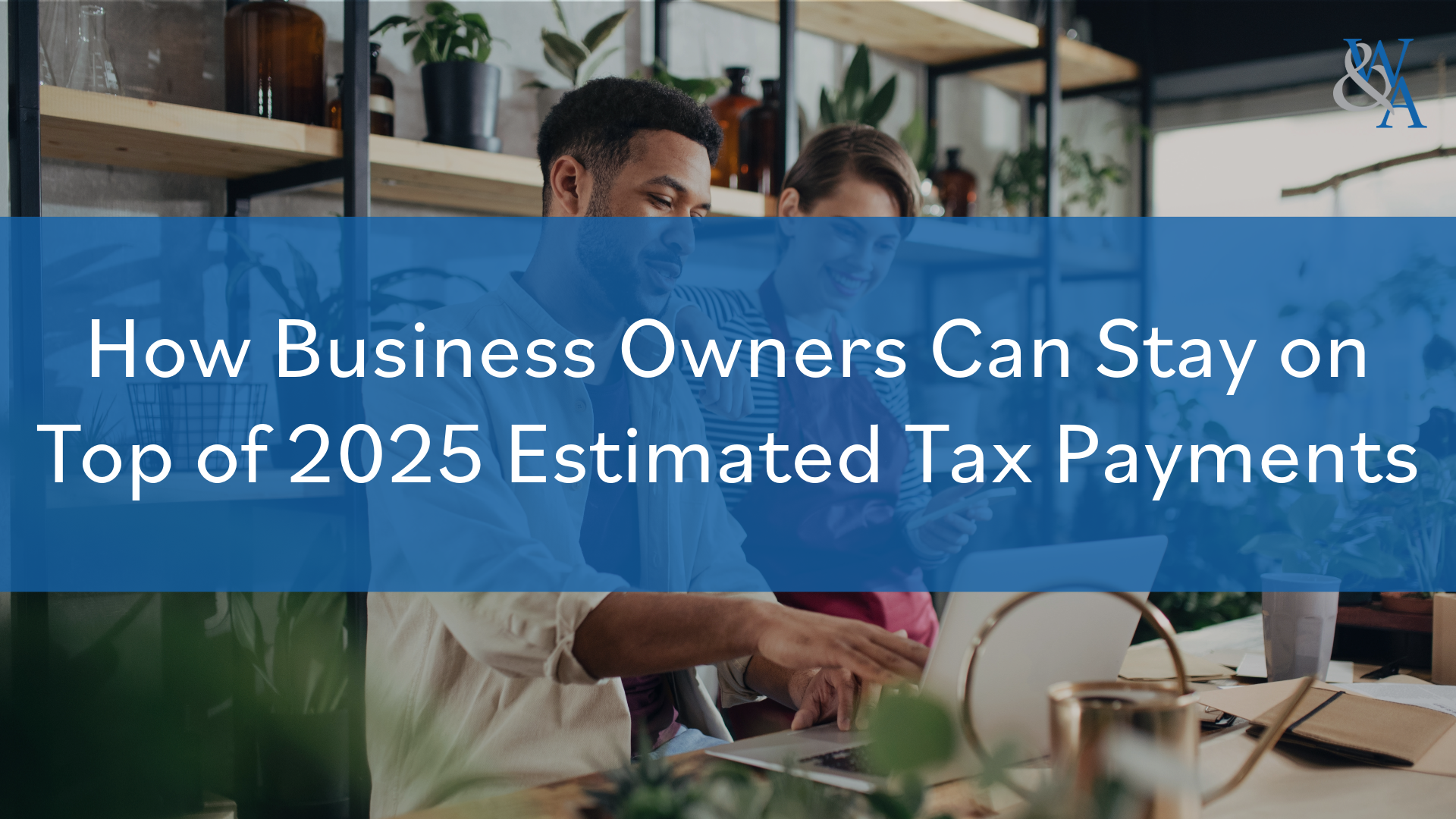
How Business Owners Can Stay on Top of 2025 Estimated Tax Payments
Tax season is not just about April 15. For business owners, tax deadlines occur year-round—especially when it comes to estimated tax payments. Unlike employees who have taxes withheld from their paychecks, self-employed individuals and small business owners must pay taxes directly to the IRS in four installments throughout the year.
Missing a payment or miscalculating what you owe can result in costly penalties and added stress. This guide will break it all down so you can stay on top of your tax obligations, avoid unnecessary fines, and keep more of your hard-earned money.
What Are Estimated Tax Payments, and Who Needs to Pay Them?
Estimated tax payments are quarterly payments made to the IRS to cover income tax and self-employment tax. If you own a business, freelance, or receive income that does not have taxes automatically withheld, you likely need to make estimated tax payments.
You may need to pay estimated taxes for 2025 if:
- You expect to owe at least $1,000 in taxes after subtracting credits and withholdings.
- Your withholding and refundable credits will be less than 90 percent of your total 2025 tax bill or less than 100 percent of your 2024 tax bill.
- You own a corporation and expect to owe at least $500 in taxes.
If you are unsure whether this applies to you, it is better to check now than to find out the hard way at tax time.
Important 2025 Estimated Tax Deadlines
Estimated tax payments are due four times a year. Missing these dates could result in IRS penalties, so it is essential to plan accordingly:
- April 15, 2025 – First-quarter payment due
- June 16, 2025 – Second-quarter payment due
- September 15, 2025 – Third-quarter payment due
- January 15, 2026 – Fourth-quarter payment due
- Even though the fourth payment falls in the next calendar year, it still counts toward your 2025 tax obligations.
How to Avoid Penalties on Estimated Tax Payments
The IRS imposes penalties for underpayment and late payment of estimated taxes. Here are some strategies to ensure compliance and avoid unnecessary costs:
- Use the Safe Harbor Rule – If you pay at least 100 percent of what you owed last year (or 110 percent if your adjusted gross income was over $150,000), you will not be penalized, even if you end up owing more.
- Pay at Least 90 Percent of Your Tax Bill – If you underpay, ensure your total estimated payments cover at least 90 percent of what you owe for 2025 to avoid penalties.
- Make Payments on Time – Even if you cannot pay the full amount, sending partial payments reduces penalties and interest charges.
The IRS calculates penalties based on the amount underpaid and the length of the delay. If you are uncertain about your estimated tax liability, consulting with a tax professional can help you stay compliant.
Florida Business Taxes: What You Need to Know
Florida offers a tax-friendly environment for business owners, but there are still obligations to be aware of:
- No State Income Tax – Florida does not tax personal income, which benefits sole proprietors and pass-through businesses.
- Corporate Tax Rate – Businesses in Florida pay a corporate income tax of 5.5 percent.
- Sales Tax Considerations – The state sales tax rate is 6 percent, but local counties can add up to 2 percent, bringing the total as high as 8 percent in some areas.
Understanding Florida’s tax structure can help business owners plan effectively and avoid compliance issues.
New Tax Updates for Florida Businesses in 2025
Florida lawmakers have implemented tax relief initiatives that may benefit small businesses:
- Reduction in the Business Rent Tax – Businesses renting commercial space will see a tax cut, lowering overhead costs.
- Expanded Sales Tax Holidays – Certain periods throughout the year allow businesses to sell eligible goods tax-free, encouraging customer spending.
These updates may impact tax planning strategies, so business owners should stay informed on how these changes affect their operations.
Smart Strategies for Managing Estimated Taxes
Managing estimated tax payments can be straightforward with proper planning. Here are some strategies to make the process easier:
- Automate Payments – Setting up automatic payments through the IRS Direct Pay system helps prevent missed deadlines.
- Keep Accurate Records – Using accounting software like QuickBooks can help track income, expenses, and tax liabilities in real time.
- Work with a Tax Professional – A CPA can help you accurately calculate estimated payments and identify opportunities for tax savings.
Being proactive with estimated tax payments ensures smooth tax filing and minimizes unexpected tax burdens.